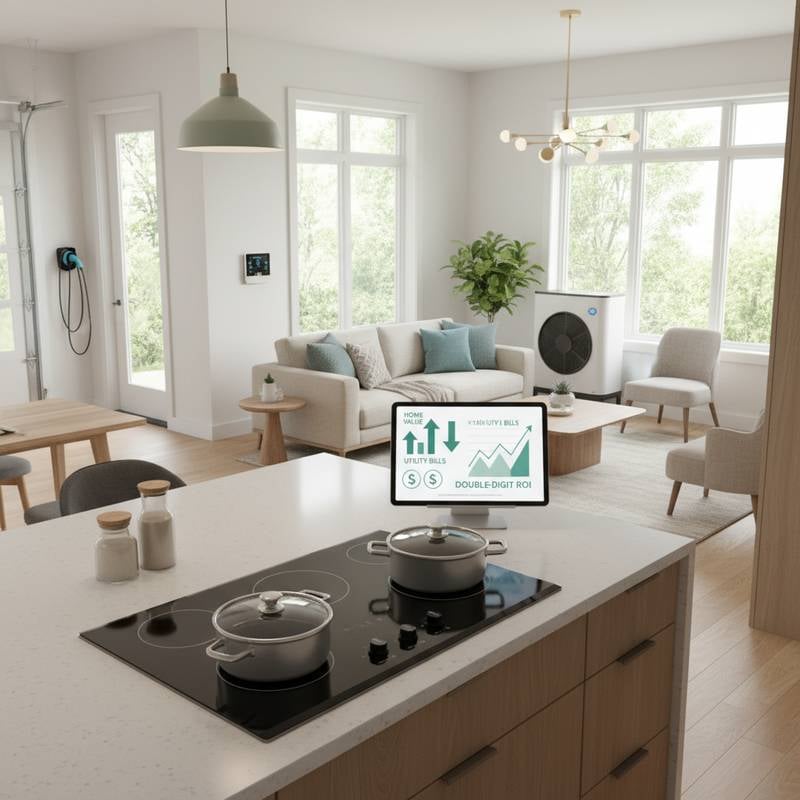Key Takeaways
- Mandatory energy audits in 12 states alter renovation and sales strategies for property owners.
- These audits expose annual energy waste that amounts to thousands of dollars in losses.
- Effective audits yield returns on investment within two to five years via decreased utility expenses.
- Knowledge of local requirements enables homeowners to evade fines and enhance resale prices.
Understanding the Importance of Energy Audits
Energy audits reveal concealed inefficiencies that squander funds annually. Heating and cooling systems represent almost half of a typical home's energy consumption. Inadequate insulation or leaks in attics result in heating or cooling the external environment rather than the living space. Additional elements, such as lighting, appliances, and water systems, amplify these losses if not addressed.
A professional audit pinpoints these issues and calculates their financial impact. Common discoveries involve:
- Drafts near windows and doors that permit conditioned air to escape.
- Aging HVAC systems that fall short of current efficiency benchmarks.
- Leaky ducts that diminish overall system effectiveness.
- Reliance on inefficient incandescent or halogen lighting.
- Water heaters that operate at reduced efficiency or exceed household requirements.
Homeowners who apply suggestions from certified auditors frequently achieve 10 to 30 percent reductions in utility costs. For families with annual energy expenditures of two thousand dollars, this translates to annual savings between two hundred and six hundred dollars.
Building a Strong Financial Argument for Audits
Voluntary audits, even in states without mandates, serve as wise financial decisions. Audit data directs investments toward upgrades that provide the greatest benefits. Homeowners thus allocate resources efficiently for maximum impact.
Projected returns on common investments:
- Sealing air leaks and adding insulation: Annual ROI of 15 to 25 percent from diminished heating and cooling expenses.
- Replacing with high-efficiency HVAC: ROI of 10 to 20 percent, considering lower energy demands and enhanced comfort.
- Switching to LED lighting: ROI of 30 to 50 percent, given low initial outlay.
- Installing smart thermostats: ROI of 8 to 12 percent, with payback often in under two years.
Energy-efficient homes also gain value in the real estate market. Experts note that properties with verified improvements sell for 3 to 8 percent more than similar homes lacking such records. In bustling markets, this advantage far surpasses audit expenses.
Broader Impacts on Environment and Real Estate
Energy audits advance sustainability by curbing carbon emissions and conserving resources. State initiatives often tie audits to goals for energy savings or emission cuts, prompting residents to manage their usage responsibly.
Households experience advantages beyond financial ones. Better insulation and ventilation improve comfort levels and air quality indoors. Less stress on systems prolongs equipment durability, which lowers repair and replacement needs. Together, these changes foster a more healthful and durable living space.
In the housing market, efficiency documentation signals prudent stewardship. Properties featuring current audit reports and upgrades receive more competitive bids and sell more rapidly. Energy efficiency now functions as a key selling point, akin to modernized kitchens or integrated smart technologies.
Steps to Implement Audit Recommendations
Convert audit insights into tangible savings through deliberate actions. Begin with inexpensive fixes, including duct sealing, door weatherstripping, and bulb replacements with energy-efficient options. Progress to mid-level upgrades like insulation enhancements or programmable thermostat installations.
Homeowners maintain momentum by:
- Reviewing energy bills every quarter to confirm improvements.
- Conducting reassessments every five years or following significant renovations.
- Integrating efficiency measures with renewables, such as solar panels or geothermal systems, when feasible.
View audits as the starting point for ongoing enhancements. This perspective safeguards finances and contributes to environmental health. Expanding state requirements underscore a lasting commitment to energy accountability and intelligent management.










